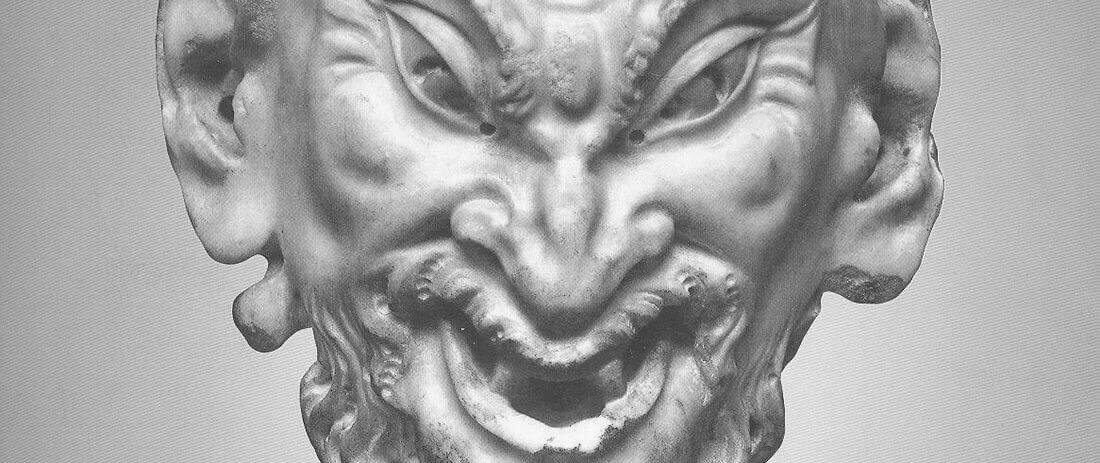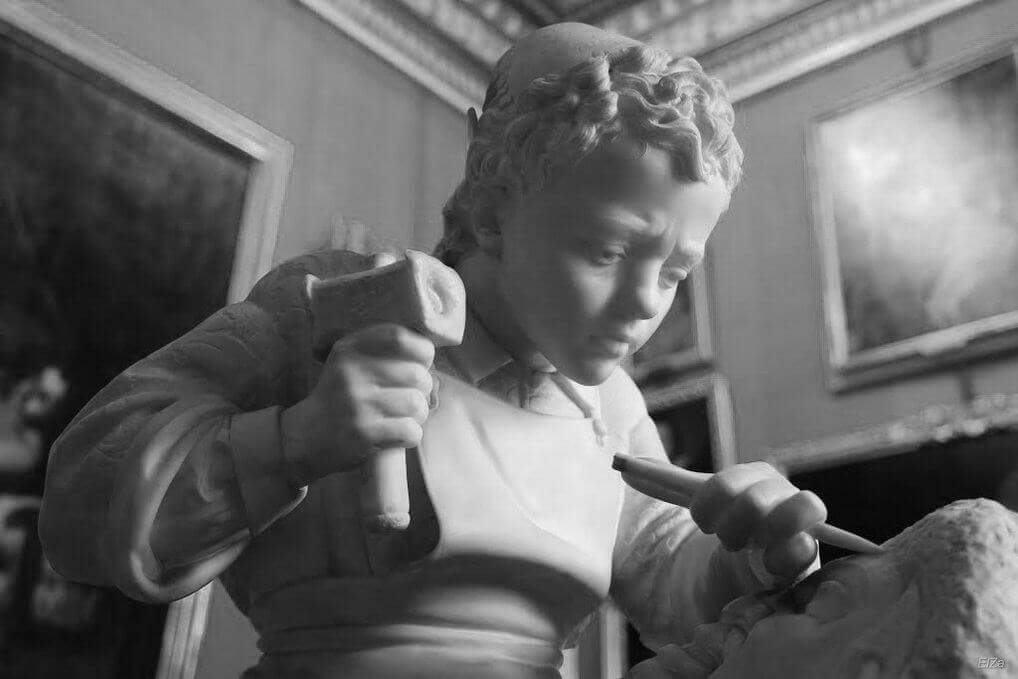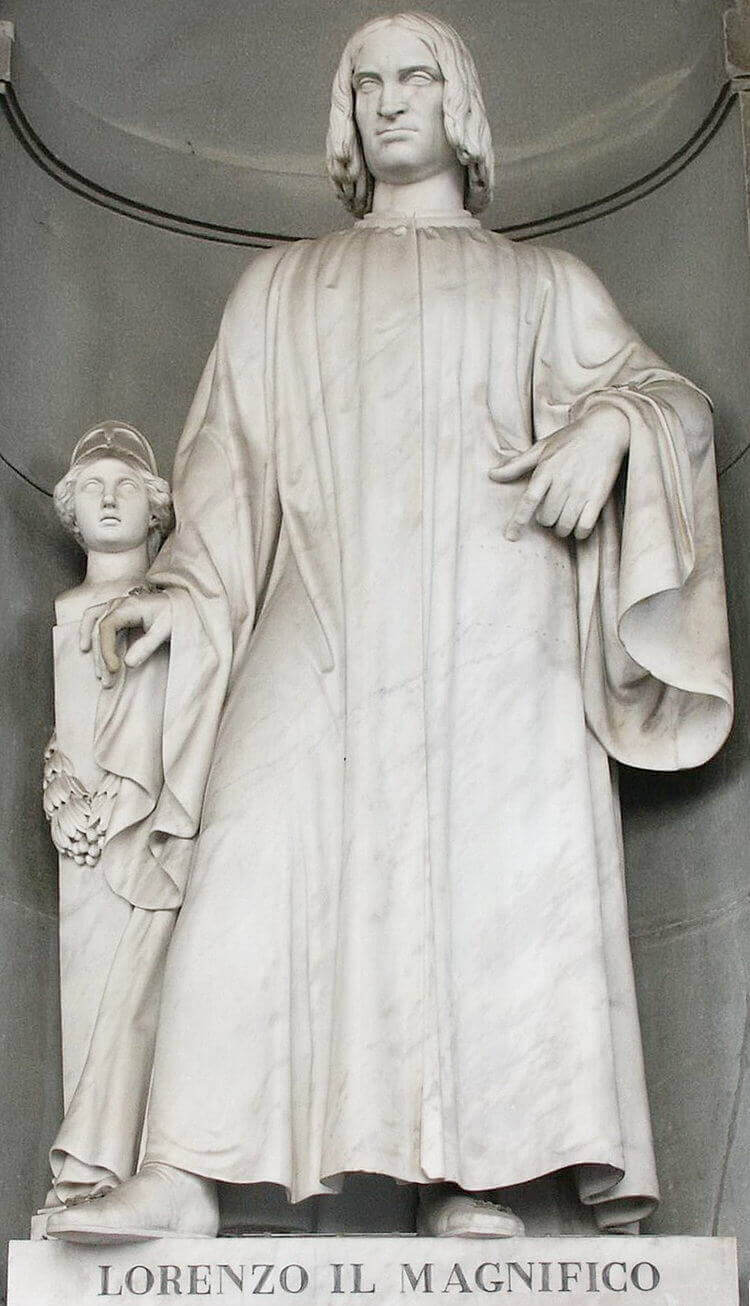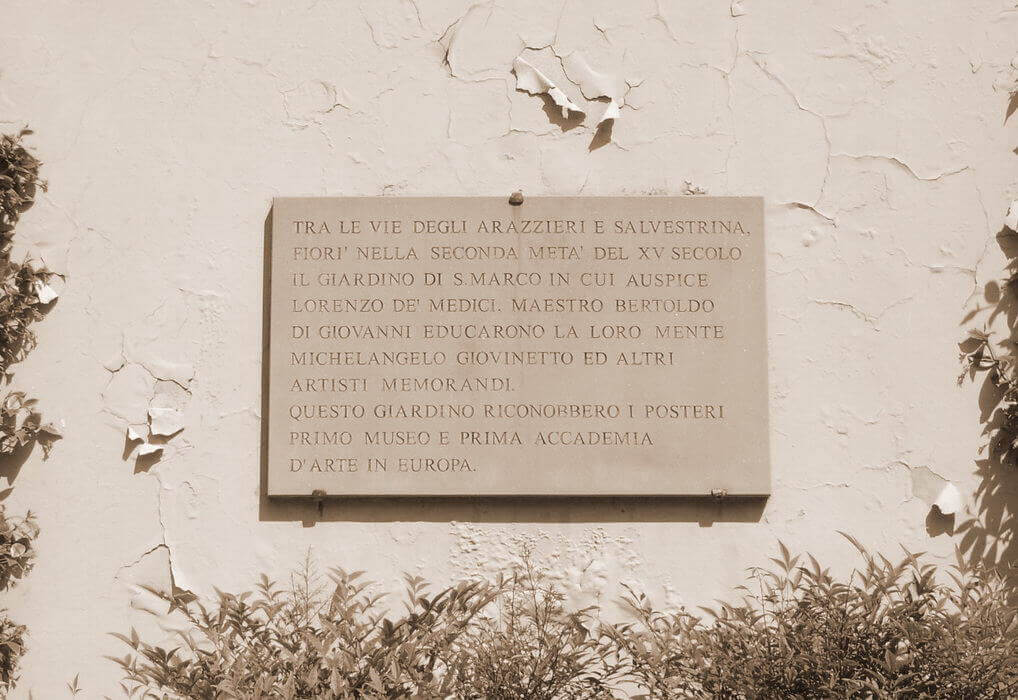
Marble faun head: Lorenzo de’ Medici falls in love with Michelangelo’s genius
The faun head, figure of Roman mythology, is considered the first marble work sculpted by Michelangelo Buonarroti during his young age. It has been realized while attending the San Marco Garden school of art founded by Lorenzo de’ Medici. It has always had a great value and it became famous for a particular event that changed the future of the artist.
Hammer and chisel to break the teeth of the faun head
One day Michelangelo, while copying an ancient faun head, decided to get noticed customizing it. The original one had the mouth closed, instead he realized it with the mouth open, showing teeth and tongue. Lorenzo de’ Medici, quick-witted observer, kindly accepted the challenge and he made him notice that an old satyr could not have perfect and regular teeth. Michelangelo immediately perceived the provocation, in few moments with hammer and chisel he broke the teeth and drilled the gum to make it appear as if a tooth had been extracted with the whole root.
Lorenzo was astonished and surprised by the readiness and genius of the young artist and he decided to host and to grow him as a son investing time and money for his artistic education. He was followed by his learned court and he allowed him to access the gems, the hard stones and the cameos treasure.
Michelangelo attended the Medicean Garden from 1489 to 1492, that was the year Lorenzo de’ Medici died.

Marble sculpture: Michelangelo while carving the faun
Who is the faun?
The faun is a divinity of the Roman mythology, protectress of the country, of the flocks and of the woods.
It is represented with a human aspect, pointed ears, feet and horns of goat and sometimes also with the tail. Later, in the Greek mythology, it begins to be assimilated to the Satyr: minor divinity that represented the fertility and the vital strength of the nature. Over the years, it lost the animal attributes and it began to be represented as a bearded human being.
The theft of the faun head
A lot of artistic works were transferred from Florence and hidden in the Castle of the Guidi counts in Arezzo, in the Casentino valley, for fear of the bombardments. The hope was to preserve them from the thefts and from the damages caused by the conflict. Unfortunately during the Second World war, a lot of sculptures, including the faun head of Michelangelo, were stolen by Nazi officers. The stolen works are still in Germany, Austria and in the ex Soviet Union but no trace of the head was found.
A great void has remained in the history of the art!
Who was Lorenzo de’ Medici?
Lorenzo de’ Medici has been one of the most important political men of the Renaissance. He made history with the name “The Magnificent” for his virtues in favour of the State. He has succeeded in increasing the political importance of the city of Florence and in valorizing the splendor of the art stimulating the artists to work for illustrious customers. He has employed his personal wealth to promote the beautiful and the profit for the community by making Florence the first city of Italian art.

San Marco Garden
It was a prestigious garden of Florence, where Lorenzo de’ Medici founded the first Art Academy in Europe. He had placed many sculptural marble works belonging to the private collections of his family. Lorenzo wanted to allow young talented artists to study the ancient history and to improve the technique practicing with the reproductions, under the supervision of Bertoldo di Giovanni sculptor. Many students were selected by Domenico Bagordi’s studio, called the Ghirlandaio, including Francesco Granacci and later also his friend Michelangelo. Probably was Granacci to favor the admission.
This garden, before belonging to the Medicean dynasty and to become famous, was a green area owned by the adjacent San Marco convent.

After the expulsion of the de’ Medici family, it was dismantled to realize elegant buildings. Till today, on a wall, there is a commemorative gravestone.
Another famous anecdote about Michelangelo is that of the Tomb of Julius II.
There are a lot of anecdotes regarding sculptors and works, we continue to tell them in order to introduce you the fascinating marble world.
This article contains general information. For questions and curiosities leave a comment below. If you wish to be contacted, please fill out the form.



